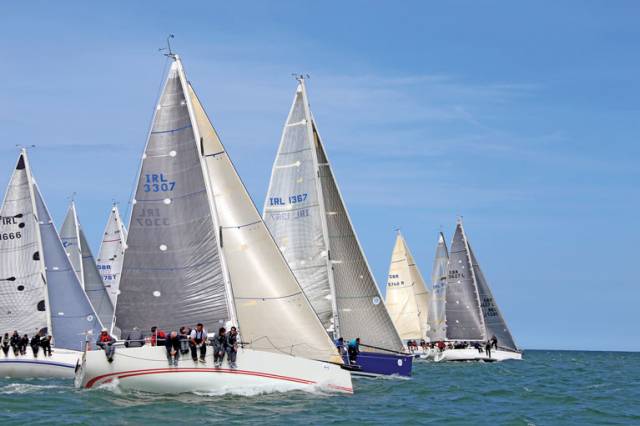With its focus on quality over quantity, next week's Volvo Dun Laoghaire Regatta has grown over 12 years into one of Ireland’s premiere sporting events, let alone sailing – and is now competing with the best in Europe.
If you want a snapshot of the sport of sailing in Ireland, Scotland and Wales in 2017, where would you go? Dun Laoghaire is the answer.
The pages of this year's 2017 Volvo Dun Laoghaire Regatta programme detail over 450 boats in 35 classes, and in so doing they provide the most accurate picture of the Irish Sea sailing scene.
Over four days in July, 300 volunteers will stage 290 races for a mix of cruiser–racers, one-design keelboats and dinghies, plus a unique classics division, all wrapped up in one Irish Sea sail-fest – with Dun Laoghaire as its centre.
In assembling such an armada, Dun Laoghaire Regatta (VDLR) has become, at its seventh staging, not only the country’s biggest sailing event — with over 2,500 sailors competing — but also one of Ireland’s largest participant sporting happenings.
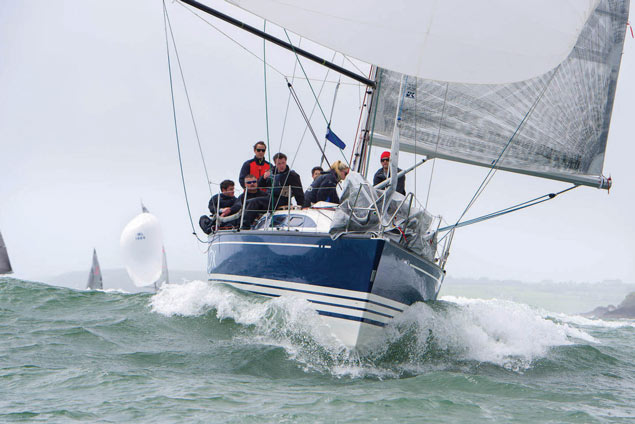 Recently crowned ICRA class two champion, Equinox, skippered by Ross McDonald, is one of 27 entries from Howth Yacht Club. Photo: Bob Bateman
Recently crowned ICRA class two champion, Equinox, skippered by Ross McDonald, is one of 27 entries from Howth Yacht Club. Photo: Bob Bateman
But what’s even more satisfying for the Dun Laoghaire organisers is that nearly half the entries are visiting boats – an indication of the future international prospects of the regatta.
It’s a big achievement for the capital’s waters, given so many other regattas are struggling for numbers.
Focus on quality
‘Never mind the quality, feel the width’ has been a criticism of modern-day regattas where organisers mistakenly focus on being the biggest in an effort to be the best.
And at a time when regatta fleets have collapsed, there is some irony in the fact that Dun Laoghaire, with its own local fleet of 300 boats, never set out to be the biggest yet nevertheless has emerged as the yacht racing hub for the Irish Sea, from the Clyde to Lands End.
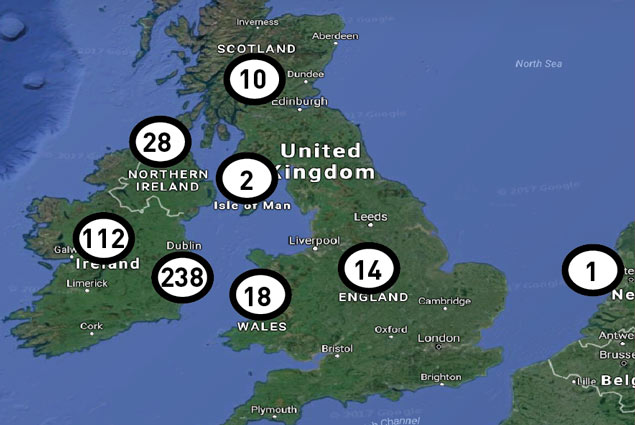 The bulk of entries are Dublin based but the regatta has a growing reach across the Irish Sea
The bulk of entries are Dublin based but the regatta has a growing reach across the Irish Sea
Dublin Bay’s priority focussed instead on quality racing, even after it got off to a spectacularly bad start in 2005 when the event was becalmed for four days.
The idea to rekindle a combined Dublin Bay event had resurfaced after an absence of almost 40 years, mostly because of the persistence of a band of passionate Dun Laoghaire sailors who believed that their home could become the ‘Cowes of the Irish Sea’ if the town and the local clubs worked together.
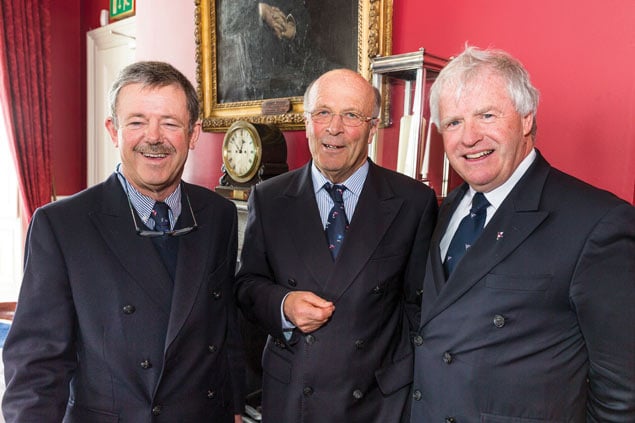 VDLR Beginnings – In 2004, the then Rear Commodores of RStGYC, Owen McNally, (left) RIYC, Timothy Goodbody (centre) and NYC's Ronan Beirne were tasked by the Combined Clubs Committee, chaired by Phil Smith , to submit a proposed format for a combined regatta involving all four waterfront clubs. This they did over a very enjoyable dinner and submitted their proposals which were subsequently adopted by the all four waterfront clubs (Dun Laoghaire Motor Yacht Club, National Yacht Club, Royal Irish Yacht Club and Royal St George Yacht Club, and the inaugural event was chaired by Brian Craig in 2005. Thirteen years on from that, the same, now ex- Rear Commodores, met again to reflect on the development of this great regatta over a very social and enjoyable lunch. Today, the biennial Dun Laoghaire Regatta is a firm fixture on the sailing calendar and run under Dublin Bay Regattas Limited, under the Chairmanship of Dermot Reidy (DMYC).
VDLR Beginnings – In 2004, the then Rear Commodores of RStGYC, Owen McNally, (left) RIYC, Timothy Goodbody (centre) and NYC's Ronan Beirne were tasked by the Combined Clubs Committee, chaired by Phil Smith , to submit a proposed format for a combined regatta involving all four waterfront clubs. This they did over a very enjoyable dinner and submitted their proposals which were subsequently adopted by the all four waterfront clubs (Dun Laoghaire Motor Yacht Club, National Yacht Club, Royal Irish Yacht Club and Royal St George Yacht Club, and the inaugural event was chaired by Brian Craig in 2005. Thirteen years on from that, the same, now ex- Rear Commodores, met again to reflect on the development of this great regatta over a very social and enjoyable lunch. Today, the biennial Dun Laoghaire Regatta is a firm fixture on the sailing calendar and run under Dublin Bay Regattas Limited, under the Chairmanship of Dermot Reidy (DMYC).
Although fickle winds conspired against them in 2005, the support since then from all four Dun Laoghaire waterfront yacht clubs – the Dun Laoghaire Motor YC, National YC, Royal Irish YC and Royal St George YC – in association with the two racing clubs of Dublin Bay SC and Royal Alfred YC, gave them the momentum to carry on.
Numbers peaked in 2007 with over 480 entries, and while that figure remains a record, it is this year’s turnout – matching 2005 – that shows the event is now a confirmed highlight on the British and Irish yachting calendar.
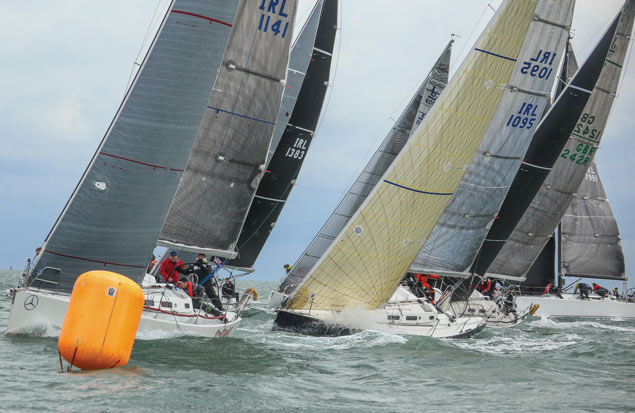 Of the six cruiser classes there is a strong argument that not only is the 27–boat VDLR Cruisers One division the class of the event but it’s also the class of the year. 11 J109s (pictured above) will race as part of the red hot fleet. Photo: Afloat.ie
Of the six cruiser classes there is a strong argument that not only is the 27–boat VDLR Cruisers One division the class of the event but it’s also the class of the year. 11 J109s (pictured above) will race as part of the red hot fleet. Photo: Afloat.ie
Stronger than expected
If success is measured by fleet size, then the VDLR has looked on course for a buoyant seventh edition since April, when half of its massive fleet had already signed up.
More than 2,500 sailors and 800 visitors will race across 35 classes, so outgoing Irish Sailing Association (ISA) President David Lovegrove rightly noted at the regatta launch that it will be one of Ireland’s biggest sporting events when the first gun fires on July 6.
Only once since its inaugural outing in 2005 have numbers dipped below 400, and that was in the teeth of recession in 2013. But even then the fleet only dropped to 393, just 93 lower than 2007’s record year. In 2017 the numbers are tantalisingly close to matching that peak.
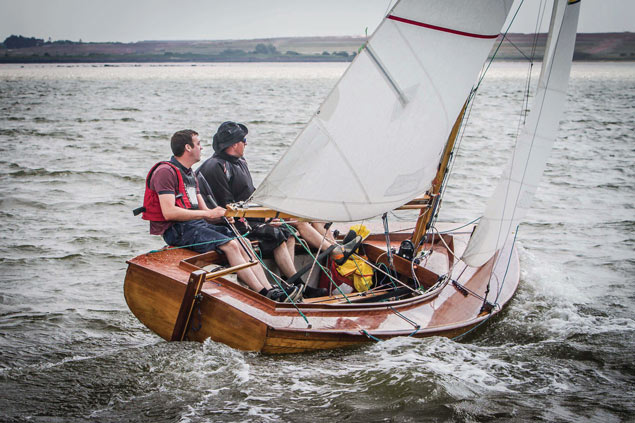 The Dublin Bay Mermaid (above) will have a strong 15–boat turnout. A strong Skerries Sailing Club contingent has swelled the classic clinker fleet that includes national champion Sam Shiels at the helm of number 189 Azeezy
The Dublin Bay Mermaid (above) will have a strong 15–boat turnout. A strong Skerries Sailing Club contingent has swelled the classic clinker fleet that includes national champion Sam Shiels at the helm of number 189 Azeezy
Entries this year are also stronger than expected, as all four Dun Laoghaire clubs bang the drum for the harbour’s bicentenary year.
Well over half of all entries – 60% in fact – come from the locality, with the Royal Irish and National YCs providing half of that number between them.
In keeping with the local celebratory mood, this year a special Kingstown 200 Cup, kindly presented by Dun Laoghaire Harbour Company, will be awarded to the ‘Most Outstanding Classic Boat of Regatta’.
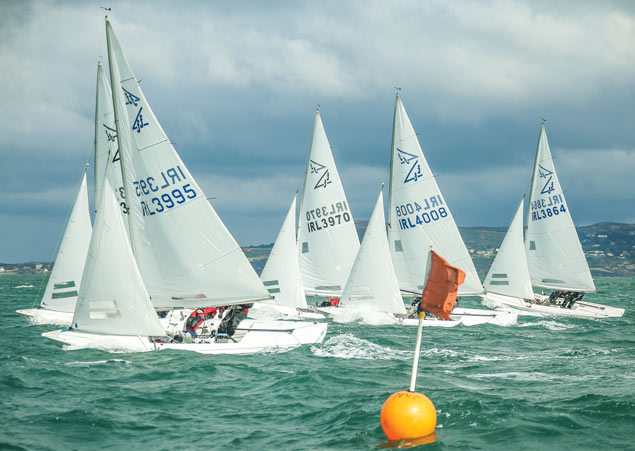 Dublin Bay’s Flying Fifteen fleet has been a mainstay of the regatta since 2005. A 17–boat fleet is entered this year
Dublin Bay’s Flying Fifteen fleet has been a mainstay of the regatta since 2005. A 17–boat fleet is entered this year
Unique facilities
Tim Goodbody, chairman of the VDLR in 2015 and 2017 (and a Cruisers One contender in his own right), believes the regatta owed its prominence in European sailing events to a number of factors.
“One of the reasons it attracts so many entrants is that it is one of the least expensive sailing events in Europe, thanks to generous sponsorship and support,” he said.
Another reason is certainly Dun Laoghaire’s unique facilities. This is the place where the modern rules of sailing were framed over 150 years ago. The Victorians built the best of yachting venues on Dublin’s south shore so that the sailors of today, four generations later, get to enjoy the fruit of their labours.
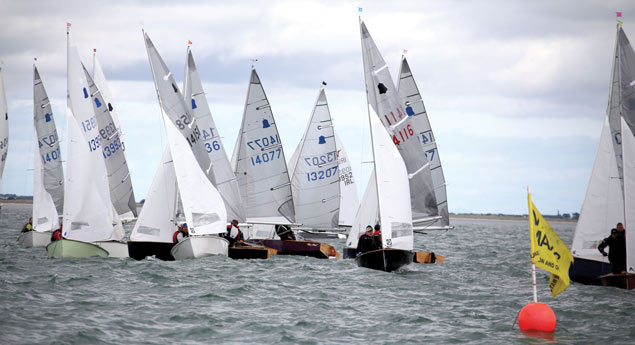 Not only is the 26-boat GP14 fleet one of the largest of the ten competing dinghy classes it also has participation across the country from Moville in Donegal to Youghal in Couty Cork. The boats to watch, of course, in this Leinster Championship fleet will undoubtably be the match between Greystones Sailing Club’s Shane MacCarthy in 14203, the current World Champion and Olympian Ger Owens in 14076. Owens, sailing with Mel Morris, ended MacCarthy’s unbeaten run (on the World Champions) home waters at the Purcell Trophy in May.
Not only is the 26-boat GP14 fleet one of the largest of the ten competing dinghy classes it also has participation across the country from Moville in Donegal to Youghal in Couty Cork. The boats to watch, of course, in this Leinster Championship fleet will undoubtably be the match between Greystones Sailing Club’s Shane MacCarthy in 14203, the current World Champion and Olympian Ger Owens in 14076. Owens, sailing with Mel Morris, ended MacCarthy’s unbeaten run (on the World Champions) home waters at the Purcell Trophy in May.
Dun Laoghaire is a beautiful working and residential seaside town about 12 km (7.5 miles) south of Dublin city centre and 20 km (12 miles) from the Irish capital’s international airport.
Even from mainland Britain, it’s closer than many might think. Sailors from the Ribble, Mersey, Menai Strait, Anglesey, Cardigan Bay and Isle of Man have to travel three times the distance to the Solent as they do to Dublin Bay.
This is one of the major selling points of the Irish event, and explains the range of entries from 69 different clubs around Ireland, including 28 boats from Northern Ireland.
Across the Irish Sea, two boats are coming from the Isle of Man, 18 from Wales, 10 from Scotland and 14 from England. In a nod to organisers that a European market might be worth looking at for 2019, there is a single entry from Holland.
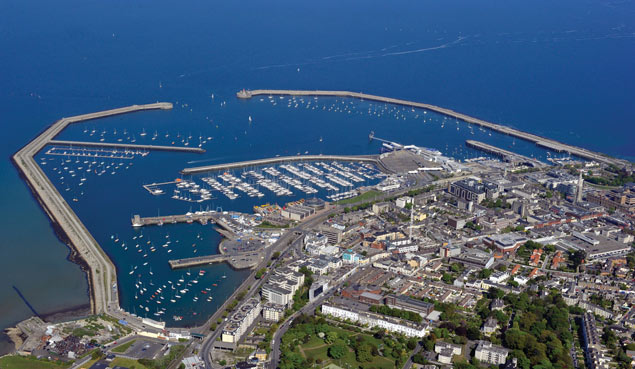 Dun Laoghaire Harbour's compact site has world class sailing clubs and race areas adjacent to a modern town with a Five Gold Anchor marina of 820 berths at its heart Photo: Michael Chester
Dun Laoghaire Harbour's compact site has world class sailing clubs and race areas adjacent to a modern town with a Five Gold Anchor marina of 820 berths at its heart Photo: Michael Chester
Dun Laoghaire is also unique in sailing terms because there is only a short sail to the race areas from a Five Gold Anchor marina of 820 berths. Rapid transport links, local hotels, bars and restaurants, and four unique clubs positions it as a strong rival to any other European venue
And let’s not forget the social side. The regatta has built up an enviable reputation ashore for exciting live music and entertainment, and this year’s full social programme promises to be no different.
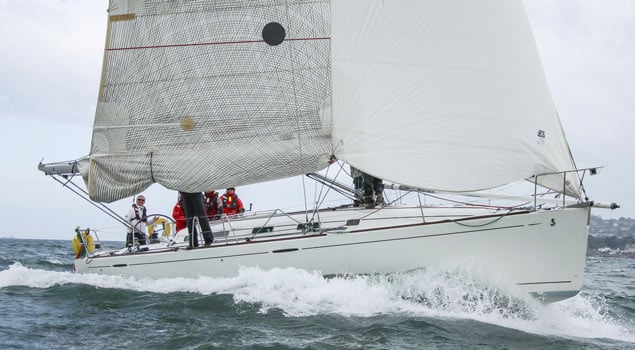 Now firmly established as part of the VDLR mix after its 2015 introduction, the 26-boat offshore class includes many regular ISORA competitors including Derek Martin’s Beneteau 44.7 Lively Lady (pictured) from the Royal Irish Yacht Club
Now firmly established as part of the VDLR mix after its 2015 introduction, the 26-boat offshore class includes many regular ISORA competitors including Derek Martin’s Beneteau 44.7 Lively Lady (pictured) from the Royal Irish Yacht Club
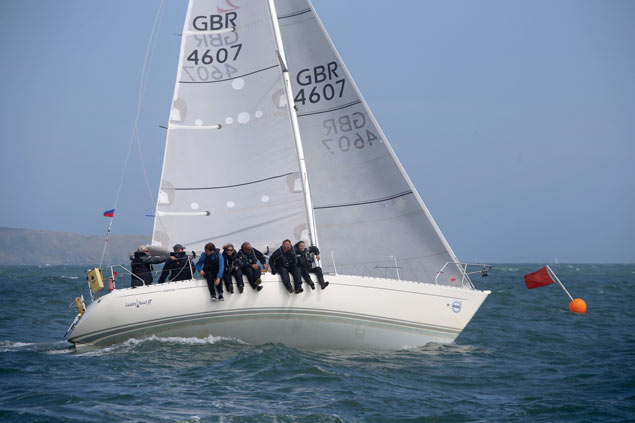 The Sigma 33 is one of the biggest one design cruiser fleets with 20 entries. The long established Dublin Bay class merged with class two for local DBSC racing this year but will hold a special One Design Dun Laoghaire bicentennial Race Day on Friday, 7th July. Pictured is Alan Harper’s Scottish entry Leaky Roof 2 from the Clyde
The Sigma 33 is one of the biggest one design cruiser fleets with 20 entries. The long established Dublin Bay class merged with class two for local DBSC racing this year but will hold a special One Design Dun Laoghaire bicentennial Race Day on Friday, 7th July. Pictured is Alan Harper’s Scottish entry Leaky Roof 2 from the Clyde
Top quality racing
But the action on the water is what it’s all about. From the Baily Lighthouse at the northern entrance to Dublin Bay across to Dalkey Island in the south, there will be seven separate courses laid out for top quality racing.
Indeed, 10 classes have included the regatta as part of their championship calendar in 2017: GP14s, 420s and Mermaid dinghies are racing for Leinster honours, while SB20s, J24s and Squibs will decide East Coast titles, and the Sigma 33s, Beneteau 21s and the Wayfarers will race for national trophies. The vintage Water Wag class will race for a new trophy, The Collen Cup.
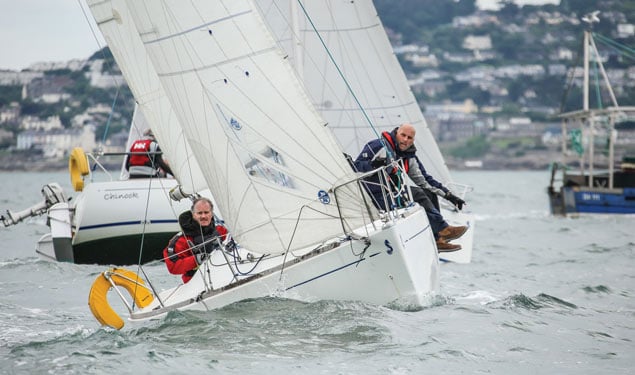 The 15–boat Beneteau 211s are holding the Irish championships as part of VDLR 2017
The 15–boat Beneteau 211s are holding the Irish championships as part of VDLR 2017
Championships running as part of VDLR 2017
Royal Dee Yacht Club Irish Sea Offshore Championship
Irish Sigma 33 National Championship
Irish Wayfarer National Championship
Beneteau 211 Irish Championship
GP14 Leinster Championship
420 Leinster Championship
Mermaid Leinster Championships
SB20 Southern Championships
J24 East Coast Championship
Squib East Coast Championship
Read the entry list class by class starting here


























